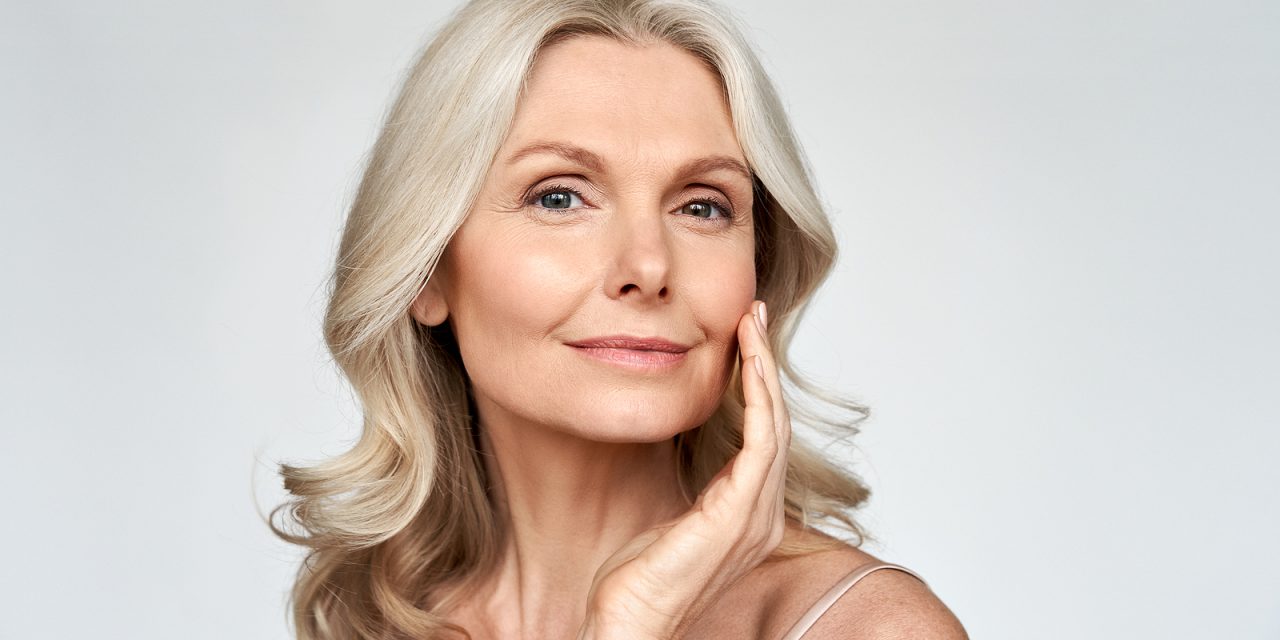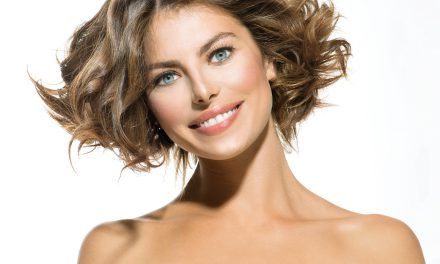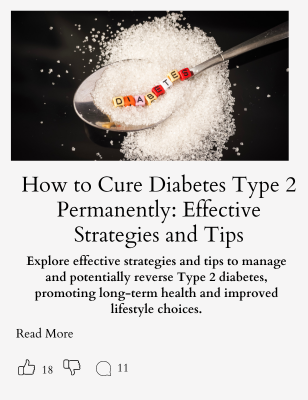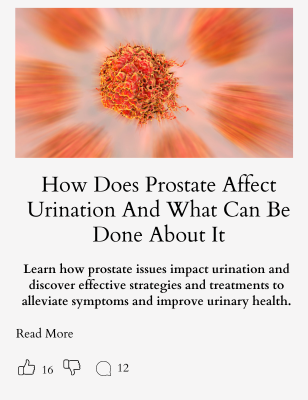Aging changes how people see beauty by bringing natural signs like wrinkles and fine lines. These changes can affect confidence as society often values youth, but many also begin to accept aging as part of life. Understanding how aging impacts skin and beauty helps people make informed choices to care for themselves better.

The best ways to reduce wrinkles focus on protecting and improving skin health. This includes using creams with ingredients like collagen boosters, staying hydrated, and avoiding sun damage. Medical treatments and healthy lifestyle choices also play important roles in keeping skin looking its best.
By balancing science with a positive view of aging, people can manage skin changes while embracing their natural beauty. Awareness and care can make a real difference in how skin ages and how beauty is perceived.
Key Takeways
- Aging naturally changes skin texture and appearance.
- Skincare and lifestyle habits help reduce wrinkles.
- A healthy mindset supports confidence alongside aging.
The Science of Aging and Skin
Aging causes clear changes in the skin at many levels. These changes come from natural processes in the body, as well as from outside influences, both of which affect how skin looks and feels.
Biological Processes Behind Aging
Skin aging happens because of changes in cells and tissues. Over time, the production of collagen and elastin—two proteins that keep skin firm and stretchy—slows down. This leads to thinner, less flexible skin.
The body’s ability to repair damage decreases, too. Cells called fibroblasts work less efficiently, reducing how skin renews itself. Additionally, the skin’s barrier weakens, meaning it loses moisture more easily.
Oxidative stress, caused by free radicals from sunlight or pollution, damages skin DNA and speeds aging. This damage causes fine lines, wrinkles, and uneven pigmentation.
Key Factors Influencing Skin Changes
Several factors speed up or slow down skin aging:
- Sun exposure: UV rays cause deep damage, breaking down collagen and causing dark spots.
- Sleep quality: Poor sleep links to more wrinkles and less skin recovery.
- Nutrition and hydration: A lack of vitamins and water slows skin repair.
- Genetics: Some people have skin that ages more slowly or faster based on DNA.
- Lifestyle choices: Smoking and stress worsen skin damage.
Active skincare ingredients like antioxidants and peptides can help protect and repair skin.
Impact on Skin Texture and Elasticity
As collagen decreases, skin loses firmness and starts to sag. Elastin fibers become damaged, reducing the skin’s ability to bounce back after stretching.
Fine lines develop first in areas with frequent movement, like around the eyes and mouth. Over time, deeper wrinkles form.
Uneven texture appears with rough patches and dryness because aging skin holds less moisture. Pores may become larger, and skin can look dull.
Improving hydration, protecting from the sun, and using products with ingredients that stimulate collagen can slow these texture changes. For more details, visit studies on the relationship between sleep deprivation and skin aging.
There’s a product that addresses how aging affects perceptions of beauty by targeting wrinkles and fine lines. It combines expert-backed ingredients to help reduce signs of aging and promote a more youthful appearance. Let me know if you’d like to learn more! Learn more on our YouTube Channel Here: Valleant Health, or see us on Facebook Here: https://www.facebook.com/valleant
Cultural Shifts in Perceptions of Beauty
Ideas about beauty change over time and are influenced by many factors like history, media, and social beliefs. How people view aging and attractiveness is shaped by these forces, which affect the way wrinkles and fine lines are seen.
Changing Ideals of Beauty Through the Ages
Beauty standards shift with different periods. In some eras, fuller bodies were seen as signs of health and wealth. Other times, slimness and youthfulness became the ideal.
Aging was once accepted as natural, but in many modern cultures, youth is often linked to beauty. This shift influences how wrinkles and fine lines are noticed and treated.
These changes show that what people find attractive depends on history and culture, not just biology.
Role of Media in Shaping Standards
The media plays a big role in defining beauty ideals. Television, movies, and social media often highlight smooth, youthful skin.
Advertising for skincare and beauty products promotes the idea that wrinkles and fine lines should be reduced. This creates pressure for people to maintain a young appearance.
Celebrities and influencers set trends by using treatments like microcurrent or anti-aging products. This shapes public views on aging and beauty.
Societal Attitudes Toward Aging
Many societies view aging differently. In some, older age is respected for wisdom and experience. Others focus on youthful looks to judge beauty and value.
This affects how people feel about their wrinkles and fine lines. In cultures that prize youth, aging skin is often seen negatively.
Changing these attitudes may help people accept aging naturally rather than fearing it or feeling pressured to hide it with treatments.
Common Causes of Wrinkles and Fine Lines
Wrinkles and fine lines form due to changes in the skin’s structure, including the loss of support and moisture. These changes happen because of natural processes, inherited traits, and outside influences that break down the skin’s protective layers.
Sun Exposure and Photoaging
Sunlight is the main cause of early wrinkles. Ultraviolet (UV) rays damage collagen and elastin, which keep skin firm and stretchy. Over time, this damage makes skin thinner and less flexible, leading to lines and creases.
Areas often exposed to the sun, like the face, neck, and hands, show wrinkles first. Using sunscreen daily protects the skin by blocking UV rays. Wearing hats and protective clothing also helps reduce sun damage and slow wrinkle formation. This process is known as photoaging, which accelerates skin aging beyond natural effects.
Genetics and Lifestyle Factors
Genetics largely determines how fast a person’s skin ages and how deep wrinkles might get. Some people naturally produce less collagen or have thinner skin, making them more prone to fine lines.
Lifestyle habits also play a big role. Smoking decreases blood flow to the skin, reducing nutrients and causing earlier wrinkles. Repeated facial movements like smiling or squinting can cause wrinkles in areas such as around the eyes. Poor diet, lack of sleep, and stress also weaken skin health and worsen aging signs.
Environmental Stressors
Pollution and toxins from the environment contribute to skin aging. These stressors create free radicals—unstable molecules that damage cells. This damage breaks down collagen fibers and reduces the skin’s ability to repair itself.
Dry air and harsh weather can strip the skin of moisture, making it more fragile. Over time, exposure to these elements makes wrinkles more visible. Using moisturizers and antioxidants can help protect the skin from these effects by strengthening its barrier and reducing cell damage.
For more details about sun damage and skin aging, see this Mayo Clinic resource on wrinkles.
There’s a product that addresses how aging affects perceptions of beauty by targeting wrinkles and fine lines. It combines expert-backed ingredients to help reduce signs of aging and promote a more youthful appearance. Let me know if you’d like to learn more! Learn more on our YouTube Channel Here: Valleant Health, or see us on Facebook Here: https://www.facebook.com/valleant
Topical Treatments for Reducing Wrinkles
Effective wrinkle treatments include ingredients that boost skin cell turnover, protect against damage, and increase hydration. Certain compounds help smooth fine lines and improve skin texture, while others keep skin plump and healthy-looking.
Retinoids and Retinol
Retinoids, including retinol, are vitamin A derivatives known for their strong effect on wrinkles. They speed up skin cell renewal, which reduces fine lines and evens out rough texture. Retinoids also help stimulate collagen production, making skin firmer over time.
These products can cause mild irritation or dryness at first, so it’s important to start with low concentrations and increase gradually. Using retinoids consistently often leads to noticeable improvements within weeks. Topical tretinoin is a prescription-strength retinoid proven effective for wrinkle reduction.
Peptides and Antioxidants
Peptides are short protein fragments that signal skin to produce more collagen and repair itself. They help reduce wrinkles by strengthening skin structure and improving elasticity.
Antioxidants like vitamins C and E protect skin from damage caused by free radicals, which can worsen wrinkles and age spots. Vitamin C also promotes collagen synthesis and brightens skin tone. Applying antioxidants regularly can help maintain healthier skin and delay visible signs of aging.
Moisturizers and Hydrators
Moisturizers keep skin hydrated, which makes wrinkles less noticeable by plumping up dry, rough skin. Ingredients like hyaluronic acid attract and hold water in the skin, providing long-lasting hydration.
Consistent use of moisturizers improves skin barrier function, protecting against environmental damage that can deepen wrinkles. Hydrated skin looks smoother and feels softer. Combining moisturizers with active wrinkle-fighting ingredients enhances overall results.
For details about effective wrinkle treatments, see this GoodRx article on treatments that work.
Professional and Medical Anti-Aging Solutions
Medical treatments offer targeted ways to reduce wrinkles and fine lines. These options can restore volume, improve skin texture, and promote collagen production. Each approach varies in invasiveness, recovery time, and results.
Injectables and Fillers
Injectables like Botox work by relaxing muscles that cause wrinkles, especially around the eyes and forehead. This treatment typically lasts several months and requires repeat sessions to maintain effects.
Dermal fillers, made from substances like hyaluronic acid, add volume to areas such as cheeks and lips. They help smooth deep lines and provide natural-looking fullness. Side effects are usually mild and temporary.
Both injectables and fillers are popular because they produce noticeable results with minimal downtime. However, treatment must be performed by a qualified professional to ensure safety and effectiveness.
Laser and Light Therapies
Laser treatments use concentrated beams of light to remove damaged outer skin layers and stimulate collagen growth. This process improves skin texture and reduces wrinkles.
There are different types of lasers; some focus on resurfacing the skin, while others penetrate deeper for tightening. Light therapies such as intense pulsed light (IPL) target pigmentation and fine lines.
These treatments may require several sessions for the best results. Recovery time varies depending on the intensity of the procedure and the skin type. Sun protection after therapy is crucial to prevent damage.
Chemical Peels and Microdermabrasion
Chemical peels involve applying acid solutions to exfoliate the top skin layers. This reveals smoother, younger-looking skin underneath and reduces fine lines.
Peels vary from light to deep, with deeper peels providing more dramatic results but needing longer healing. Microdermabrasion uses tiny crystals or a diamond tip to physically buff away dead skin cells.
Both procedures improve skin tone and texture. They are often combined with other treatments for enhanced effect. Multiple sessions may be needed for lasting benefits.
There’s a product that addresses how aging affects perceptions of beauty by targeting wrinkles and fine lines. It combines expert-backed ingredients to help reduce signs of aging and promote a more youthful appearance. Let me know if you’d like to learn more! Learn more on our YouTube Channel Here: Valleant Health, or see us on Facebook Here: https://www.facebook.com/valleant
Lifestyle Strategies for Youthful Skin
Maintaining youthful skin involves daily habits that support skin health from within and without. Key actions include giving skin the right nutrients, managing daily stress, and promoting good blood flow through physical activity. These practices help reduce wrinkles and fine lines by supporting skin repair and elasticity.
Nutrition and Hydration
Eating a balanced diet rich in vitamins and antioxidants helps protect the skin from damage. Nutrients like vitamin C, vitamin E, and omega-3 fatty acids support collagen production and reduce inflammation. Fresh fruits, vegetables, nuts, and fatty fish are good sources.
Hydration is equally important. Drinking plenty of water keeps skin cells plump and improves elasticity. Dehydrated skin looks dull and is more prone to fine lines.
Limiting processed foods and sugar can also reduce skin aging, as high sugar intake promotes collagen breakdown. A nutrient-rich diet combined with steady hydration can improve skin texture and appearance.
Sleep and Stress Management
Quality sleep allows the body to repair skin cells and produce new collagen. People who get 7-9 hours of sleep regularly often have fewer wrinkles and a healthier complexion.
Stress increases cortisol, a hormone that can break down collagen and cause skin inflammation. Managing stress through meditation, deep breathing, or hobbies helps preserve the skin’s youthful structure.
Creating a nightly routine that promotes relaxation and consistent sleep patterns supports skin regeneration. Avoiding screens before bedtime also improves sleep quality, boosting overall skin health.
Exercise and Circulation
Regular exercise improves blood circulation, bringing oxygen and nutrients to the skin. This promotes cell renewal and helps remove toxins that can age the skin.
Physical activity can also reduce stress hormones, which helps limit skin damage caused by chronic stress. Even light exercise like walking or yoga supports skin vitality.
Sweating during exercise helps clear pores and remove impurities, reducing the risk of skin irritations. Consistent movement encourages a healthy, radiant complexion by supporting the skin’s natural repair process.
See more about strategies for youthful skin here.
Building a Positive Mindset Toward Aging
A positive mindset toward aging helps people feel better about themselves and their appearance. It involves accepting changes and refusing to let negative ideas about age affect one’s confidence or happiness.
Self-Acceptance and Confidence
Accepting the natural changes that come with age is key to feeling confident. When people focus on their strengths and what they enjoy, they build a healthy self-image. This means recognizing that wrinkles or fine lines do not define their worth or beauty.
Building confidence includes practicing self-care and setting realistic goals for appearance. Simple acts like dress, posture, and grooming boost self-esteem. People who accept themselves often face aging with less stress and more joy.
Challenging Age-Related Stereotypes
Many stereotypes about aging are false and harmful. They suggest that getting older means losing value or beauty. Challenging these ideas means questioning myths and refusing to judge oneself or others by age alone.
Replacing negative thoughts with positive ones about aging can improve health and longevity. Studies show people with positive beliefs about aging live longer and have better mental health. Encouraging open conversations and focusing on abilities, not limits, helps break down harmful stereotypes.
For more on fostering this mindset, see how to encourage a positive mindset in aging adults.
Frequently Asked Questions
Wrinkles and fine lines can be treated in various ways depending on their depth and cause. Aging affects skin by reducing collagen and elastin, which makes skin thinner and more fragile. Preventing skin aging involves habits and products that protect and nourish the skin over time.
What are the top treatments for reducing deep facial wrinkles?
Top treatments include laser therapy, chemical peels, and injectable fillers. Microcurrent treatments and Botox are also effective for reducing deep wrinkles by relaxing muscles and stimulating collagen.
What natural methods effectively minimize fine lines on the face?
Natural methods include using moisturizers with ingredients like hyaluronic acid and antioxidants. Wearing sunglasses to protect skin from sun damage and applying gentle retinoids can help reduce fine lines. Staying hydrated and eating a diet rich in vitamins supports skin health.
How can I quickly eliminate wrinkles from my face?
Quick results often come from temporary solutions like makeup primers or wrinkle-reducing serums. Professional treatments like Botox or dermal fillers can also offer faster wrinkle smoothing compared to creams.
In what ways does aging alter skin appearance and increase wrinkle formation?
Aging reduces elastin and collagen, causing skin to lose firmness and develop wrinkles. Skin becomes thinner and more fragile, making wrinkles more visible. Sun exposure and environmental damage speed up this process.
What are the best strategies for preventing premature skin aging?
Using sunscreen daily is essential to protect skin from UV damage. Regular moisturizing and avoiding smoking help maintain skin elasticity. Gentle skincare with retinoids and antioxidants supports long-term skin health.
What skincare routine is recommended for a 70-year-old to maintain natural beauty?
A 70-year-old should use gentle cleansers, rich moisturizers, and products with hyaluronic acid. Retinoids may be added carefully to improve texture. Daily sun protection and hydration are key to keeping skin healthy.
There’s a product that addresses how aging affects perceptions of beauty by targeting wrinkles and fine lines. It combines expert-backed ingredients to help reduce signs of aging and promote a more youthful appearance. Let me know if you’d like to learn more! Learn more on our YouTube Channel Here: Valleant Health, or see us on Facebook Here: https://www.facebook.com/valleant


















